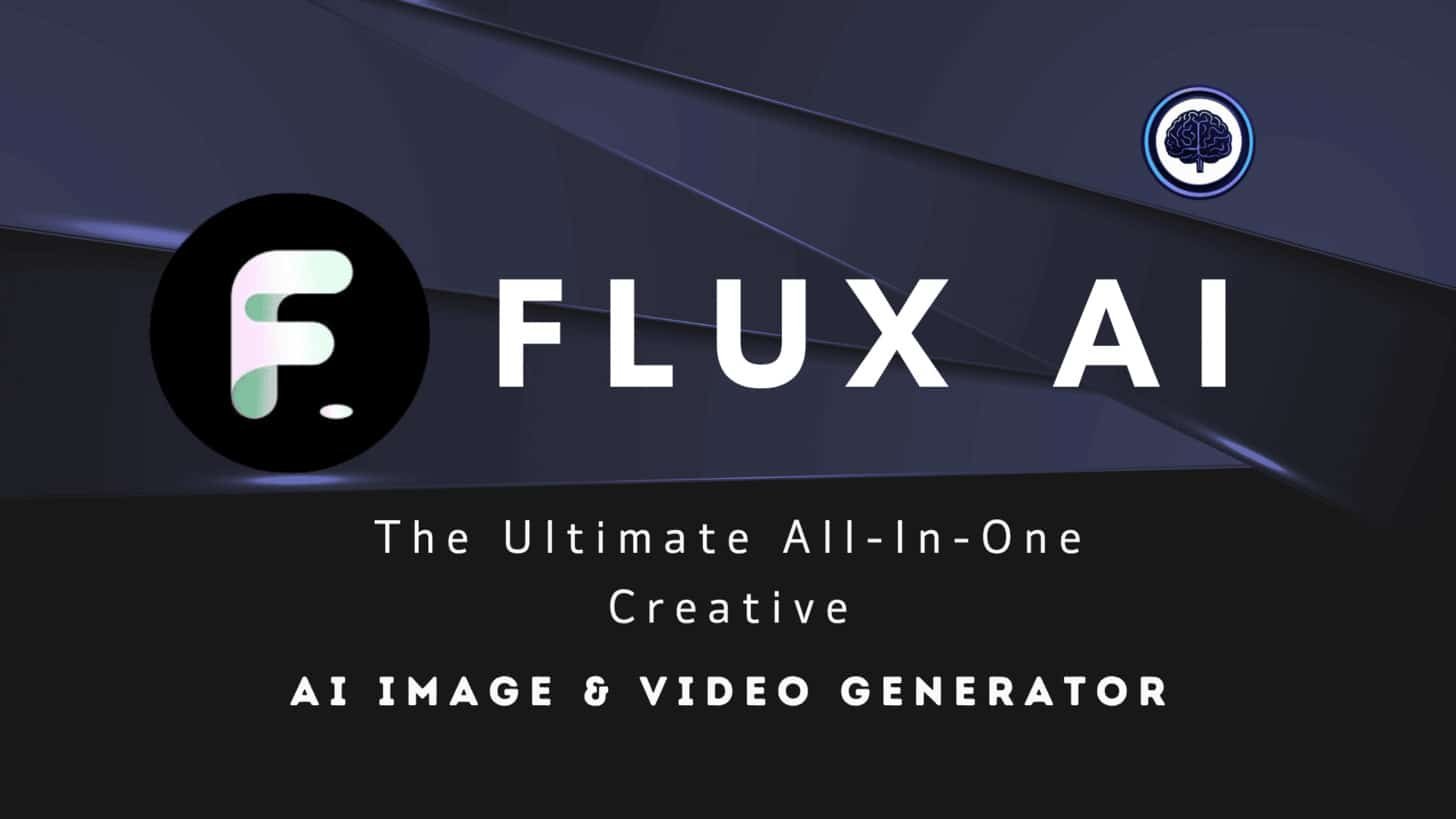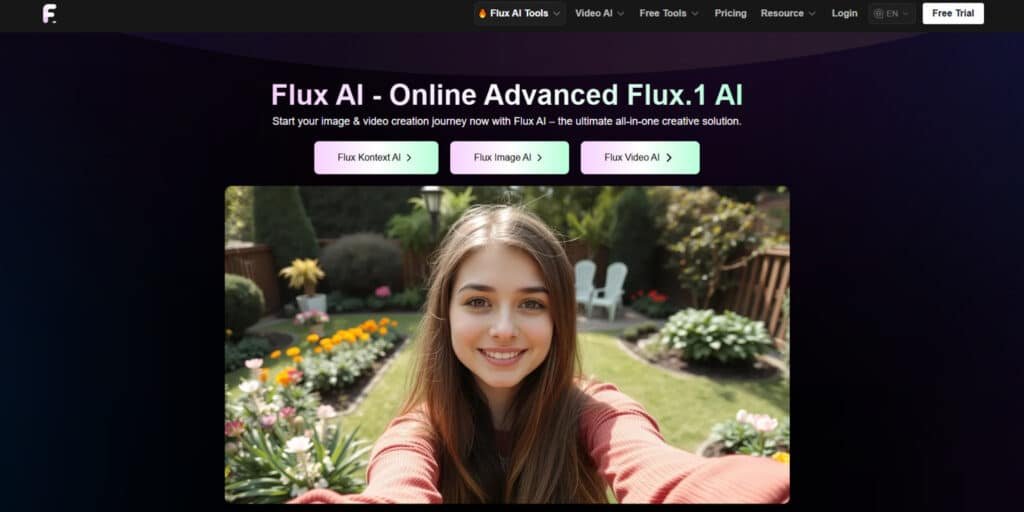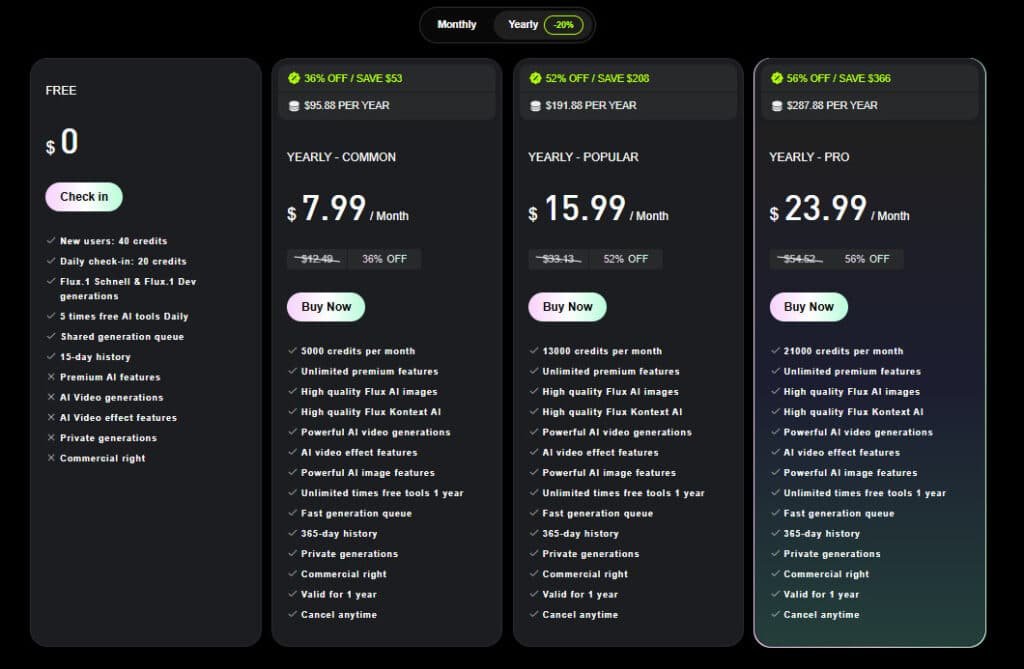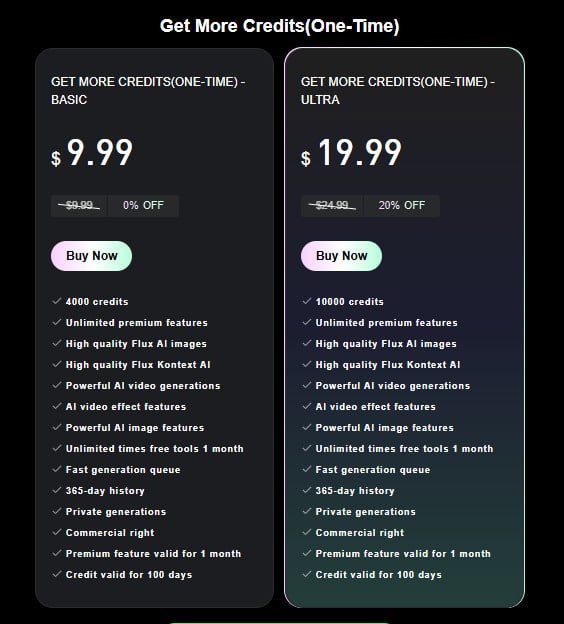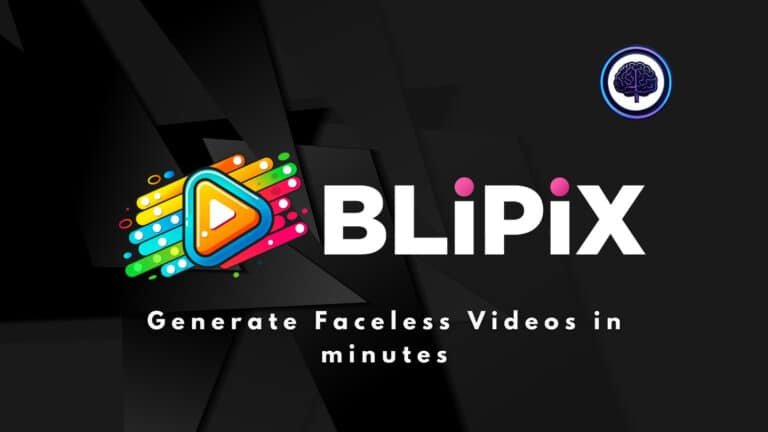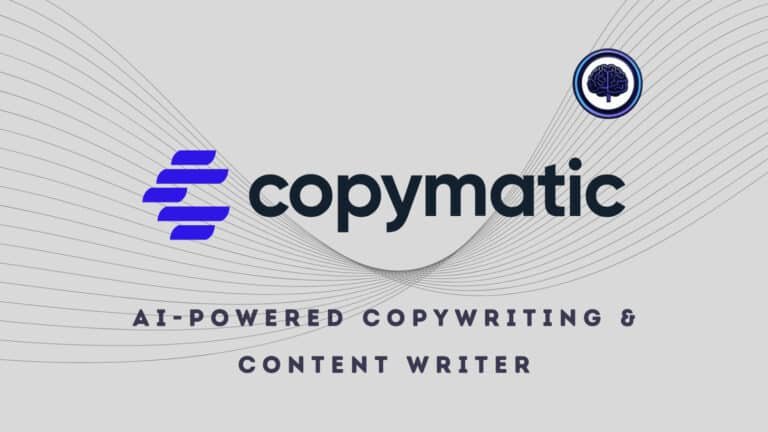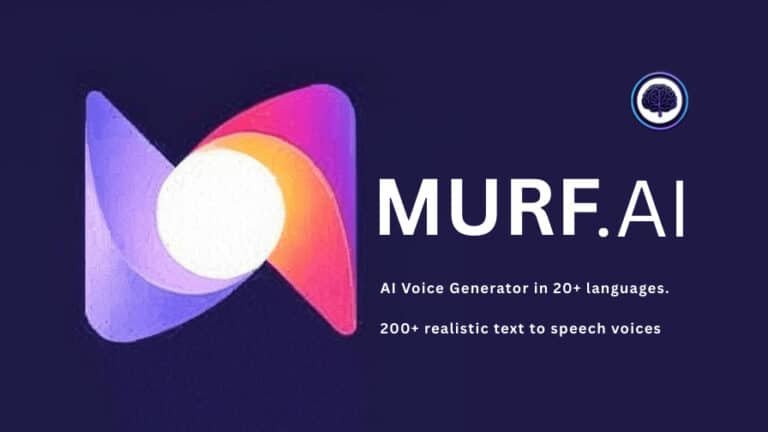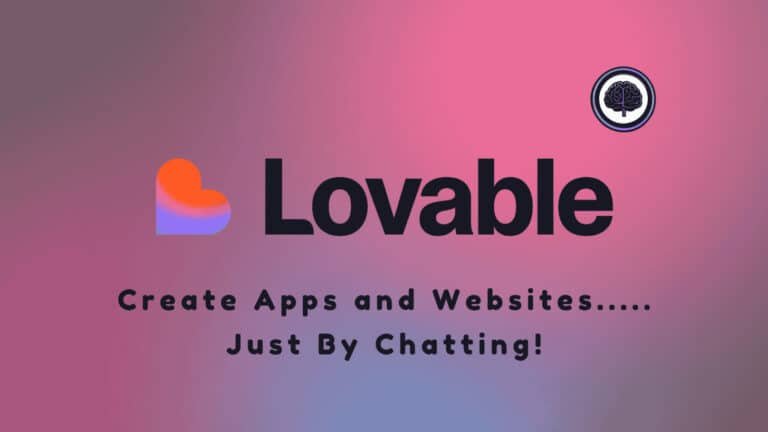Problem: You need fast, reliable tools that make high-quality images and videos without a pile of infrastructure or guesswork.
Frustration grows when models promise speed but fail on detail, or when outputs look inconsistent under deadline pressure.
I’ve tested the new flux.1 lineup from Black Forest Labs — three hybrid models that combine multimodal and parallel diffusion transformer blocks and scale to large parameter counts.
In my hands, these models balance prompt fidelity, visual diversity, and raw rendering speed. They helped me produce crisp image assets, repeatable edits, and consistent results for client work.
What this article covers: how each model differs, which features matter for professionals, real-world performance comparisons, pricing and access, and a hands-on case study so you can decide fast.
Ready to see if this tool fits your stack? Let’s dive in.
Key Takeaways: Flux.1 AI Review
- Flux.1 AI Review previews three specialized models for speed, quality, and experimentation.
- Expect strong image detail, reliable prompt adherence, and useful editing tools for production work.
- Performance rivals current top models while offering ultra-fast options for rapid iteration.
- Access is available via cloud playgrounds and integrations — no heavy local setup required.
- I’ll show practical settings, sample timings, and who should adopt now versus wait.
Introduction to Flux AI: Origins, Purpose, and Place in Today’s AI Landscape
Black Forest Labs built the Flux.1 lineup to bridge studio-grade visuals and fast iteration. I find that setup important: teams need quality that scales and tools that don’t slow creative flow.
Who made it: Black Forest Labs leads development, and the work has visible support from industry partners. That backing shows up in integrations with GoEnhance AI, the official Flux Playground, and cloud access via Segmind.
What it aims to do is simple: raise generative capabilities for production work while keeping access flexible across multiple platform options. The core family includes [pro], [dev], and [schnell], plus Kontext editions for in-context edits.
In practice, these models let you move from rapid drafts to final assets without swapping tools. I saw better prompt fidelity and finer visual details than many incumbents in my tests.
- Versions cover ideation to production—so you can scale how you use the tech.
- Wide community and platform support means fewer integration headaches.
Expect the rest of this review to dig into performance, pricing, and real-world workflows so you can map this system into your stack and content pipeline.
What Is Flux AI?
This family of models mixes transformer blocks and diffusion workflows to squeeze both detail and speed from modern GPUs. I’ll break down how that matters to you and your workflow.
How the family works under the hood
Technical but practical: the architecture blends multimodal and parallel diffusion transformer blocks with flow matching. Rotary positional embeddings and parallel attention keep composition and context tight.
That combo boosts hardware efficiency and helps the model keep structure in tough scenes—faces, text, and layered lighting hold up better during generation.
Who benefits most
I’ve used these tiers in client work. Designers get cleaner lighting and material reads. Marketers get consistent brand visuals fast. Developers appreciate efficient pipelines. Studios gain scale and repeatability.
How it compares: quality, speed, and prompt adherence
In my tests, the [pro] and [dev] variants outpaced other leading systems on visual quality and prompt fidelity. The [schnell] tier trades some detail for raw speed—perfect for quick drafts.
“Once you learn one tier, moving between dev and pro is frictionless—resolution and steps scale with the job.”
| Tier | Max Resolution | Steps | Best for |
|---|---|---|---|
| [schnell] | 1024×1024 | 1–4 | Rapid ideation, concept scans |
| [dev] | 2048×2048 | 4–8 | R&D, test renders, fine control |
| [pro] | 4096×4096 | 8–16 | Final art, high-detail production |
- Use cases: product hero shots, concept boards, lifestyle composites.
- Accuracy in typography and composition is better than before; pairing with Kontext tightens results.
Best Features of Flux AI
Flux AI is a powerhouse platform for AI-driven image and video creation, built on the robust Flux.1 architecture. With a suite of advanced models and apps, it empowers users to craft photorealistic images, dynamic videos, and specialized creative outputs.
Whether you’re a designer, developer, or hobbyist, Flux AI’s generator tools offer unmatched versatility. Below, we dive into the complete feature set, organized for clarity, showcasing how Flux AI fuels creativity across diverse applications.
1. Flux AI Models
The core of Flux AI lies in its diverse AI models, each tailored for high-fidelity generation. From rapid prototypes to ultra-realistic outputs, these models cater to various needs, balancing speed, quality, and specialization.
Built on the open-source Flux.1 framework, they excel in photorealistic and artistic generation, with a version of each model optimized for specific tasks.
- Flux Krea AI: A collaborative model integrated with Krea tools for iterative image refinement and creative workflows.
- Flux.1 Kontext Pro: A professional-grade, context-aware model for precise scene understanding and enhanced image details.
- Flux.1 Kontext Max: A maximum-resolution variant of Kontext, optimized for large-scale, high-detail generations.
- Flux 1.1 Pro: An upgraded pro version with improved prompt adherence and faster inference for professional use.
- Flux.1 Dev: A developer-focused model for experimentation, fine-tuning, and integration into custom applications.
- Flux.1 Pro: The standard professional model for high-quality, commercial-grade image synthesis.
- Flux.1 Schnell: A “Schnell” (fast) variant for rapid generations, perfect for quick prototypes or iterations.
- Flux 1.1 Pro Ultra: An ultra-premium model with enhanced realism, lighting, and composition control.
- Flux Kontext Dev: A development edition of Kontext, supporting custom context training for tailored outputs.
- Flux Kontext Lora: A LoRA (Low-Rank Adaptation) fine-tuned model for personalized styles and efficient user data training.
- Nano Banana Image Generator: A lightweight, fun model for stylized, banana-themed or nano-scale image creations.
- Seedream 4.0 AI: An advanced generator for dream-like, surreal images with imaginative visuals.
- Google VEO 3 AI Video: An integration or emulation of Google’s Veo 3 for dynamic video generation and storytelling.
- Hailuo 02 AI: A model for fluid, hailuo-inspired video effects, possibly motion or elemental-based.
- Seedance 1.0 AI: A dance and motion synthesis model for animating characters with rhythmic movements.
- MidJourney Video 1.0: A video extension inspired by Midjourney’s artistic style for creative clips.
- Kling 2.1 Standard: A standard Kling AI model for general video generation.
- Kling 2.1 Master: A master edition with advanced controls for professional video editing.
- Kling 2.5 Turbo Pro: A turbo-fast pro model for high-speed video rendering with enhanced features.
- Wan 2.1: A model for wide-angle or panoramic video/image synthesis.
- Wan 2.2: An updated variant with improved stability and detail.
- Wan 2.5: The latest model, emphasizing speed and quality in expansive generations.
- Hedra Character 3: A character animation model for expressive avatars and 3D-like figures.
- Higgsfield AI: A physics-based AI for realistic simulations, like particle effects, in images and videos.
- Vidu Q1: A quarterly update model for video duplication and style transfer.
- Vidu 2.0: A core model for high-fidelity video creation.
2. Flux Kontext Apps: Image AI
Flux AI’s image apps leverage Kontext models for seamless generation and editing. These one-click tools support text prompts, uploaded images, or references, delivering outputs in various resolutions and styles to spark creativity.
- Flux Kontext AI: The core app for context-aware image generation from text or sketches.
- Flux AI Image Generator: The primary text-to-image tool for photorealistic or artistic renders.
- Flux AI Video Generator: A hybrid app for short video clips from static images (see Video AI for details).
- Seedream 4.0 AI: Generates surreal, dream-inspired images with vibrant color palettes.
- Image to Image AI: Transforms existing images based on text prompts, ideal for style transfers.
- Flux AI Avatar Generator: Creates custom avatars or profile pictures with realistic Flux rendering.
- AI Poster Generator: Designs promotional posters with layouts, text overlays, and thematic elements.
- Photo to Cartoon: Converts photos into cartoon or animated styles.
- AI Product Photography: Generates professional e-commerce product shots with customizable backgrounds and lighting.
- AI Virtual Try On: Simulates clothing or accessory try-ons over user photos.
- Old Photo Restorer: Enhances and repairs vintage or damaged photos with AI upscaling and colorization.
- AI Headshot Generator: Produces professional headshots from selfies or descriptions.
- AI HairCut Style Generator: Visualizes different hairstyles on uploaded portraits.
- Ghibli Art Studio: Applies Studio Ghibli’s whimsical, hand-drawn anime style to images.
- Flux Realism Image Generator: Specializes in hyper-realistic human and object renders.
- Google Imagen4 AI: Integrates Imagen 4 for advanced image synthesis, inspired by Google’s tech.
- Qwen Image Edit: A precise editing tool for modifications like inpainting.
- Flux Krea AI: A Krea-enhanced Flux app for collaborative editing sessions.
- Gemini Flash Image Editor: A fast editor using Gemini tech for quick adjustments.
- Recraft AI Image Generator: A tool for reconstructing or vectorizing images.
- Flux Lora Image Generator: LoRA-adapted Flux for user-trained custom styles.
- Flux Redux AI: A variant for iterative refinements and generation version control.
- Flux Fill AI: An inpainting/outpainting tool to fill or extend image areas.
- Flux Canny/Depth AI: Uses Canny edge detection and depth maps for structured generations.
- AI Background Changer: Seamlessly replaces or generates new backgrounds.
- AI Image Colorizer: Adds color to black-and-white images with historical accuracy.
- Image Object Remover: Erases unwanted objects, naturally filling in the space.
- AI Anime Generator: Creates anime-style characters and scenes.
- AI Action Figure Generator: Designs 3D-like action figure renders from descriptions.
- Barbie Doll Box Generator: Generates custom Barbie-style doll packaging and figures.
- AI Plush Toy Generator: Creates soft toy designs with fabric textures.
- AI Simpsons Style Generator: Applies The Simpsons’ iconic yellow-skinned cartoon style.
- Studio Ghibli AI: A dedicated Ghibli transformation for landscapes and characters.
- AI Medal Generator: Designs custom medals, badges, or awards.
- Krea AI: A general app for real-time AI art collaboration.
- AI New Year Avatar: A holiday-specific avatar creator for New Year themes.
- AI New Year Generator: Generates festive New Year cards, scenes, or animations.
3. Flux Kontext Apps: Video AI
Flux AI’s video apps extend Flux models to dynamic video generation, supporting text-to-video, image-to-video, and editing workflows.
Outputs range from short clips (5-30 seconds) to longer sequences, with motion control and lip-sync features to boost creativity.
- Flux AI Video Generator: The main text-to-video tool for dynamic scenes.
- Photo to Video: Animates static photos into smooth video clips with added motion.
- Flux Text to Video: Generates videos directly from text prompts.
- Video to Video AI: Applies styles or edits to existing video uploads.
- Product to Video: Creates promotional videos from product images.
- AI Kissing Video: Specialized for romantic scene generation with kissing animations.
- AI French Kissing: An advanced variant for detailed intimate motion.
- AI Talking Avatar: Lip-syncs audio to avatars for talking-head videos.
- AI Hug: Animates hugging or embrace scenes.
- Ghibli Art Video Generator: Creates Ghibli-styled animated videos.
- Earth Zoom Out Video: Produces cinematic earth-from-space zoom effects.
- AI Kungfu: Generates martial arts action sequences.
- Action Figure Video Generator: Animates action figures in dynamic poses.
- Wan 2.2 Animate: An animation tool using Wan 2.2 for fluid motions.
4. Free Tools of Flux AI
Accessible without a subscription, these tools provide utility for prompt crafting, analysis, and basic enhancements, serving as entry points to premium features and fostering creativity.
- Flux AI Prompt Generator: Crafts optimized prompts for better generation results.
- Image to Prompt Generator: Reverse-engineers prompts from uploaded images.
- Free Image Describer: Analyzes and describes images in detail for accessibility or inspiration.
- Free Beauty Test: Simulates beauty filters or makeup trials on photos.
- Free Action Figure Prompts: Pre-made prompt templates for action figure designs.
- Free Image Upscaler: Enhances image resolution without quality loss.
5. Additional Platform Features
- Loading/Accessibility: A smooth loading screen ensures a seamless user experience, with web-based access requiring no downloads.
- Integration and Customization: Models like LoRA enable user fine-tuning, while apps support batch processing and exports in formats like PNG and MP4.
- Community and Updates: The Flux.1 ecosystem sees frequent model updates (e.g., 1.1 releases), with prompt generators encouraging community sharing, though no dedicated forums are mentioned.
- Ethical Considerations: Tools like the object remover prioritize privacy, and the photo restorer ensures historical accuracy, though no explicit ethical policy is outlined.
6.Structure, depth, and workflow tools
Control tools like Canny and Depth lock composition and add 3D sense. Redux creates quick variants; Fill fixes hands, labels, or seams. Segmind bundles LoRA and recommended parameter ranges for consistent results.
| Feature | [pro] | [dev] | [schnell]/Kontext |
|---|---|---|---|
| Max resolution | 4096×4096 | 2048×2048 | 1024×1024 / Context edits |
| Best use | Final hero image | Catalog, text-heavy scenes | Rapid drafts, in-context editing |
| Key tools | Canny, Depth, LoRA | Depth, Redux, Fill | Redux, Fill, Kontext modes |
“Lock presets per client — consistent lighting seeds and LoRAs cut revision cycles dramatically.”
Quick tip: pair Canny+Depth for product consistency and Redux+Fill for quick micro-adjustments. Those tool combinations save time and keep final polish in your usual editor only when needed.
Pricing
Budget, license terms, and platform choice decide how you actually deploy these models. I find that clear rules up front save time and surprise invoices later.
Flux AI offers flexible pricing with monthly, annual, and one-time plans. Free access includes limited generations; premium tiers unlock unlimited features, high-quality images/videos, fast queues, and commercial rights. Annual plans save up to 56%. Below are concise plan details and a compact comparison table.
Free Plan
$0/month. Basic access for starters. Features: 40 new-user credits, 20 daily; Flux.1 Schnell/Dev; 5 free AI tools/day; shared queue; 15-day history.
Monthly Standard
$9.99/month (20% off). Entry-level paid plan. Features: 5000 credits/month; unlimited premium features; high-quality images/videos; fast queue; 365-day history; private generations; commercial rights.
Monthly Popular
$19.99/month (40% off). Mid-tier for frequent use. Features: 13000 credits/month; unlimited premium features; high-quality images/videos; fast queue; 365-day history; private generations; commercial rights.
Monthly Professional
$29.99/month (45% off). High-volume pro plan. Features: 21000 credits/month; unlimited premium features; high-quality images/videos; fast queue; 365-day history; private generations; commercial rights.
Annual Common
$95.88/year ($7.99/month, 36% off). Yearly starter. Features: 5000 credits/month; unlimited premium features; high-quality images/videos; fast queue; 365-day history; private generations; commercial rights.
Annual Popular
$191.88/year ($15.99/month, 52% off). Mid-tier yearly. Features: 13000 credits/month; unlimited premium features; high-quality images/videos; fast queue; 365-day history; private generations; commercial rights.
Annual Pro
$287.88/year ($23.99/month, 56% off). Premium yearly. Features: 21000 credits/month; unlimited premium features; high-quality images/videos; fast queue; 365-day history; private generations; commercial rights.
One-Time Basic
$9.99. Credit boost for occasional use. Features: 4000 credits; unlimited premium features (1 month); high-quality images/videos; fast queue; 365-day history; private generations; commercial rights.
One-Time Ultra
$19.99 (20% off). Larger one-time top-up. Features: 10000 credits; unlimited premium features (1 month); high-quality images/videos; fast queue; 365-day history; private generations; commercial rights.
| Plan | Price | Credits | Premium Features | Queue | History | Private/Commercial |
| Free | $0 | 40 + 20/day | No | Shared | 15 days | No |
| Monthly Standard | $9.99/mo | 5000/mo | Yes | Fast | 365 days | Yes |
| Monthly Popular | $19.99/mo | 13000/mo | Yes | Fast | 365 days | Yes |
| Monthly Pro | $29.99/mo | 21000/mo | Yes | Fast | 365 days | Yes |
| Annual Common | $95.88/yr ($7.99/mo) | 5000/mo | Yes | Fast | 365 days | Yes |
| Annual Popular | $191.88/yr ($15.99/mo) | 13000/mo | Yes | Fast | 365 days | Yes |
| Annual Pro | $287.88/yr ($23.99/mo) | 21000/mo | Yes | Fast | 365 days | Yes |
| One-Time Basic | $9.99 | 4000 | Yes (1 mo) | Fast | 365 days | Yes |
| One-Time Ultra | $19.99 | 10000 | Yes (1 mo) | Fast | 365 days | Yes |
Practical tips for professionals: align license choice with client scope, budget for pro or a commercial platform when you ship, and watch export caps and concurrency limits — those small details affect throughput more than raw speed.
Pros & Cons
Let’s break down the wins and pain points so you can weigh trade-offs fast.
Pros
Quality: The pro and dev tiers produce standout detail at 2K–4K. Images hold lighting, texture, and composition well.
Speed: The schnell-like option gives real iteration speed for ideation without wrecking layout. That accelerates client rounds.
Flexibility: Three tiers, Kontext edits, and control tools support both exploratory work and final delivery.
Output: Redux variants and control passes yield diverse directions quickly—useful when a client wants options.
Interface & ease: Playground, Segmind, and GoEnhance UI lower onboarding friction. Teams avoid heavy setup and get productive fast.
Cons
Accuracy (text): On-image text can hiccup — missing letters or odd kerning appear in some posters and labels. For text-first jobs, plan for overlays or a type-aware path.
Learning: Mastering Canny+Depth balance takes a short practice period. Early cases may over- or under-constrain structure until you settle on presets.
Some ultra-stylized illustration needs still favor niche community-tuned models. Also, heavy batch runs need cloud orchestration to avoid local VRAM limits—budget for concurrency.
“When brand color control or strict typography matters, add your usual proofing steps—this system integrates well, but doesn’t replace dedicated CM tools.”
If these cons sound limiting, move next to Alternatives — I’ll map when Midjourney, DALL·E, or SD3-Ultra make more sense.
Flux.1 AI Review
I’ve used this lineup across client jobs and internal tests to judge real-world balance between speed and polish.
Performance and output quality across pro, dev, and schnell
flux.1 [pro] nails 4K studio lighting and natural microtextures — ideal for final hero image work. In my tests the render quality needed minimal denoise and looked client-ready.
flux [dev] felt like the daily driver: steady 2K detail, stronger text handling, and Depth guidance that kept camera feel consistent across multiple scenes.
[schnell] is the momentum tool — drafts in 1–4 steps let you explore directions fast and save real time during client rounds.
Ease of use, interface options, and workflow integration
The Playground UI maps to familiar parameter names, so ramp-up is quick. Kontext edits preserved subject identity during weather and background swaps — a practical win.
- Batch runs on Segmind pipelined Redux variants cleanly and sped approvals.
- Canny+Depth integration locked composition for storyboards with almost no fuss.
“Render results looked polished even before post — a rare mix of speed and finish.”
Overall, the image quality-to-speed ratio impressed me. For production use, the generation performance and results justify adding this tool to a vetted pipeline.
Alternatives
When you need clear trade-offs, the alternatives map out where each model still shines. Benchmarks show the pro/dev lineup often beats Midjourney v6, DALL·E 3 (HD), and SD3-Ultra on visual quality and prompt adherence. Still, each competitor keeps useful strengths.
Midjourney wins for bold, stylistic art and quick moodboard work. Use it when you want striking social content without fine controls.
DALL·E 3 is great for prompt convenience—non-technical teams get solid image generation with little tweaking. It’s a practical pick for fast concepting.
SD3-Ultra serves the open-source community well. If you like tinkering, custom LoRAs, or research experiments, it’s still very useful.
Access platforms: when to use Segmind vs. GoEnhance AI vs. Playground
Segmind is my go-to for multi-model orchestration and heavy batch runs. It handles parallel jobs without local VRAM headaches.
GoEnhance AI is ideal for demos and quick exploration—simple UI, free trials, and low friction when you hand off to clients.
Playground is the first-party test bed—use it to try Kontext Max/Pro features and validate complex edits before scaling.
“Pick the platform that removes the most roadblocks for your immediate goal—speed, volume, or deep feature testing.”
| Need | Best platform | Why |
|---|---|---|
| Batch renders | Segmind | Cloud orchestration, parallel jobs |
| Client demos | GoEnhance AI | Simple UI, quick trials |
| Feature testing | Playground | First-party tools, Kontext testing |
Case Study / Personal Experience
I pushed the system through apparel try-ons, background swaps, and style shifts to see real outcomes. Below are clear, client-focused notes so you can judge fit for your projects.
Real-world results: apparel try-ons, background swaps, and style shifts
Apparel try-on: I uploaded a product image and used Kontext Max to place a long-sleeve shirt on a male model by a lake. The system produced four coherent images with correct fabric drape and pattern continuity.
Background swap: With Canny at 0.6 and Depth at 0.5 I moved a studio sneaker image to a beach boardwalk. Edges stayed crisp; shadows looked natural.
Style shift: Casual to cyberpunk kept pose and face intact—minor hand cleanup via Fill (fix_strength ~0.6).
My experience: settings, prompts, and time-to-result
- Catalog settings: [dev], 768→2048 upscale, CFG 7, steps 32; Canny + Redux 0.3 for micro-variants.
- Prompt pattern: “Studio-lit product on matte acrylic, three-quarter view, soft rim light” plus brand LoRA for color fidelity.
- Timings: drafts in ~5–8 seconds; 2K finals in ~20–40 seconds; 4K cloud renders ~45–90 seconds—fast enough for agile projects.
“Kontext edits cut retouching and usually needed only one review cycle to deliver client-ready results.”
For larger projects I batch via Segmind to lock image seeds and keep results reproducible. Editing stayed simple, prompts were short, and overall time per asset was predictable.
Conclusion
When deadlines bite, these models keep image fidelity and iteration speed in balance. I recommend adding flux.1 to your toolkit if you need controlled, photoreal image generation that scales from drafts to hero images.
Which tier? Use [schnell] for fast concept images, [dev] for controlled 2K deliverables, and pro for 4K hero output. Kontext shines for consistent multi-step editing and try-ons.
Try the Playground first, then scale to Segmind or GoEnhance AI for batch work. Start small, save presets, and you’ll ship better results faster.
Frequently Asked Questions
Who developed Flux.1 and which organizations back it?
Flux.1 was developed by a team of research engineers and product designers with backing from established infrastructure partners and cloud providers. I’ve used platforms like Segmind and GoEnhance AI that host the models—those partnerships help with scaling and access for professional users.
What types of media can Flux.1 generate and edit?
It handles both images and short video or animation-style edits. I find the tool especially strong for high-quality image generation (4K on the pro variant) and quick scene edits—plus in-context editing that keeps composition consistent across frames.
How do the different model variants (pro, dev, schnell) compare?
The pro variant prioritizes photoreal detail and studio lighting at higher resolution; dev focuses on text understanding, depth-guided control, and flexible non-commercial workflows; schnell trades some fidelity for ultra-fast drafts. Choose based on whether you need top quality, control, or speed.
Is the platform suitable for professional workflows and production pipelines?
Yes—it’s built with efficiency and hardware friendliness in mind. I’ve integrated it into retouching and concept pipelines using LoRA-style transfers and Redux for quick variations. It works well with existing tools if you export consistent high-resolution assets.
How accurate is the tool at following prompts and rendering text?
Prompt adherence is generally strong, especially on dev for complex, multi-step instructions. Text rendering can still be a weak spot—expect quirks on precise typography or embedded copy. For critical text, I recommend post-editing in graphic software.
What editing controls are available for composition and depth?
You get standard controls like Canny edge, depth maps, and composition constraints that preserve scene geometry. I use depth-guided control to keep subjects consistent across variations—works well for apparel try-ons and background swaps.
Can I use style transfers and transfer custom looks? What about LoRA or Redux?
Yes—LoRA and Redux-style features allow quick style transfer and targeted variations. I use these to clone a look across multiple images or to make small, precise edits without re-rendering the entire scene.
What are the main pricing and licensing options?
Licensing varies by variant: the schnell option is permissively licensed for experimental use (Apache-style), dev often comes with non-commercial clauses, and pro is tied to commercial licensing. Access is typically through hosted platforms with subscription tiers.
Where can I access and try the models?
You can test and deploy through hosted platforms like Flux Playground, GoEnhance AI, and Segmind. Each offers a different mix of UI, API access, and compute options—pick the one that matches your workflow and budget.
How does Flux.1 compare to Midjourney, DALL·E 3, or SD3-Ultra?
It competes well on photorealism and speed trade-offs—pro variant rivals studio-grade outputs, schnell beats many competitors for rapid drafts, and dev offers deeper control than some consumer-focused models. Still, tools like DALL·E 3 remain strong for conceptual prompts, and SD3-Ultra is often preferred for open/custom training.
What are common use cases where Flux.1 shines?
Apparel try-ons, background replacement, product marketing images, and fast concept iterations. I’ve had good results producing client-ready images with minimal postwork—especially for campaigns that need consistent style across many assets.
What limitations or drawbacks should I expect?
Expect occasional text rendering quirks and the need for manual touch-ups for pixel-perfect results. The learning curve for advanced controls is moderate—developers and designers will get the most value, while casual users may prefer simpler interfaces from competitors.
Is it suitable for developers building custom tools or integrations?
Yes—there are developer-focused variants and APIs that support integration. I’ve used the dev model for prototype features where fine-grained control and depth guidance matter. Check platform docs for rate limits and commercial terms before scaling.
How fast are generation times and what hardware is recommended?
Generation speed depends on the variant and host—schnell can run in 1–4 steps for drafts, while pro renders take longer for 4K outputs. The platform is optimized for GPU instances; for production use, cloud GPUs (NVIDIA A100/RTX class) provide the best balance of speed and cost.
Can I fine-tune models or train on my own datasets?
Fine-tuning options exist via LoRA-style adapters and Redux workflows for quick style adaptation. Full model training is typically handled by partners—if you need custom training, coordinate with a hosting provider that supports private training runs.
How active is the community and learning resources for getting started?
There’s an active community on developer forums and platform-specific channels. I recommend starting with the official docs, sample prompts, and community-shared presets to shorten the learning curve.

